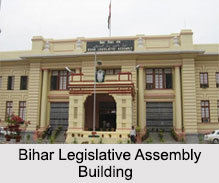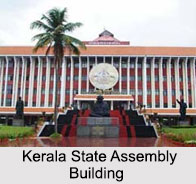 State Governments in India are responsible for the governance of the respective states of the country. India comprises of 29 states and 7 union territories. It is a sovereign, secular and democratic republic with a parliamentary form of government. Following the Constitution of India, administrative powers have been divided between the union and the state governments. State Governments in India look after state related issues. The functioning of state governments is quite similar to that of the Union Government.
State Governments in India are responsible for the governance of the respective states of the country. India comprises of 29 states and 7 union territories. It is a sovereign, secular and democratic republic with a parliamentary form of government. Following the Constitution of India, administrative powers have been divided between the union and the state governments. State Governments in India look after state related issues. The functioning of state governments is quite similar to that of the Union Government.
Composition of State Governments in India
It is the Constitution of India that describes the structure of the state governments. Thus, in every state, like the centre, the Governor is the representative of the President. He is the head of the respective State Governments in India. According to Article 153 of the Constitution, the executive power of the states will rest with the Governor and there is a Council of Ministers that is headed by the Chief Minister of the state. All powers of the State Governments in India vest in the respective Governors of the states. The main function of the Chief Minister is to advice the governor in carrying out his executive functions. The Governor is appointed by the President on the advice of the Central Government. The Governor calls for a suitable candidate to form the Government. Moreover, the Governor can also call for early elections in the state if he thinks there is a failure in the machinery of the State Government. At the state level, Chief Minister is voted as the head of the Government and the head of a state. He is provided with most of the executive powers. The Chief Minister serves a 5-year term with a requirement of re-election. 
The Council of Ministers of India comprises of the Ministers of important departments and the Ministers of State. The Council of Ministers is elected by the citizens of the state in the general elections held after every 5 years. The Members of Legislative Assembly (MLA) unanimously choose their leader as the Chief Minister of the state. The Chief Minister then assigns the portfolios to the various members of the Council. Other elected members are appointed as the Ministers of State.
As the Parliament, the states also have state assemblies. The legislature of the state consists of the Governor and the Legislative Assemblies. According to the Constitution, the Legislative Assembly of a state shall consist of not more than 500 and not less than 60 members, who are chosen by direct election from the territorial constituencies. The Legislative Assemblies function for a period of 5 years. In India, few states possess bicameral legislature, that is, there is existence of two houses such as the Legislative Assembly and the Legislative Council. There are certain states like Jammu and Kashmir, Uttar Pradesh, Bihar, Andhra Pradesh, Telangana, Maharashtra and Karnataka that have Legislative Councils. Whereas other states of India are unicameral in nature. In a unicameral state, only one house exists, that is, the Legislative Assembly.
Powers of State Governments in India
 State Governments in India possess the power to make laws for the states. The subjects on which legislation can be enacted are specified in the Seventh Schedule of the Constitution. There are certain subjects that provide exclusive power to the State Legislatures to make laws in relation to the items appearing in List II. This list is termed as the "State List". This list includes items like public order, police, public health, communications, agriculture, sales tax and taxes on entertainment and wealth. There are certain items in List III of the Constitution known as the `Concurrent List`" that includes items like electricity, newspapers, criminal law, marriage and divorce, stamp duties, trade unions and price controls. Both Parliament and the State Legislatures have the power to legislate.
State Governments in India possess the power to make laws for the states. The subjects on which legislation can be enacted are specified in the Seventh Schedule of the Constitution. There are certain subjects that provide exclusive power to the State Legislatures to make laws in relation to the items appearing in List II. This list is termed as the "State List". This list includes items like public order, police, public health, communications, agriculture, sales tax and taxes on entertainment and wealth. There are certain items in List III of the Constitution known as the `Concurrent List`" that includes items like electricity, newspapers, criminal law, marriage and divorce, stamp duties, trade unions and price controls. Both Parliament and the State Legislatures have the power to legislate.
State Governments in India function on the basis of federal relations between the State and Central governments. However, the Central Government has more authority on state matters than the State Government. Moreover, if the political conditions in any state worsen, the Central Government allows the President to declare President`s rule in that state, as the Parliament has the power to make laws for the whole or any part of India.
Different State Governments in India
The names of some of the State Governments in India are Government of Jammu and Kashmir, Government of Uttarakhand, Government of Himachal Pradesh, Government of Chhattisgarh, Government of West Bengal, Government of Bihar, Government of Karnataka, Government of Kerala, Government of Tamil Nadu, Government of Maharashtra and Government of Rajasthan.




















